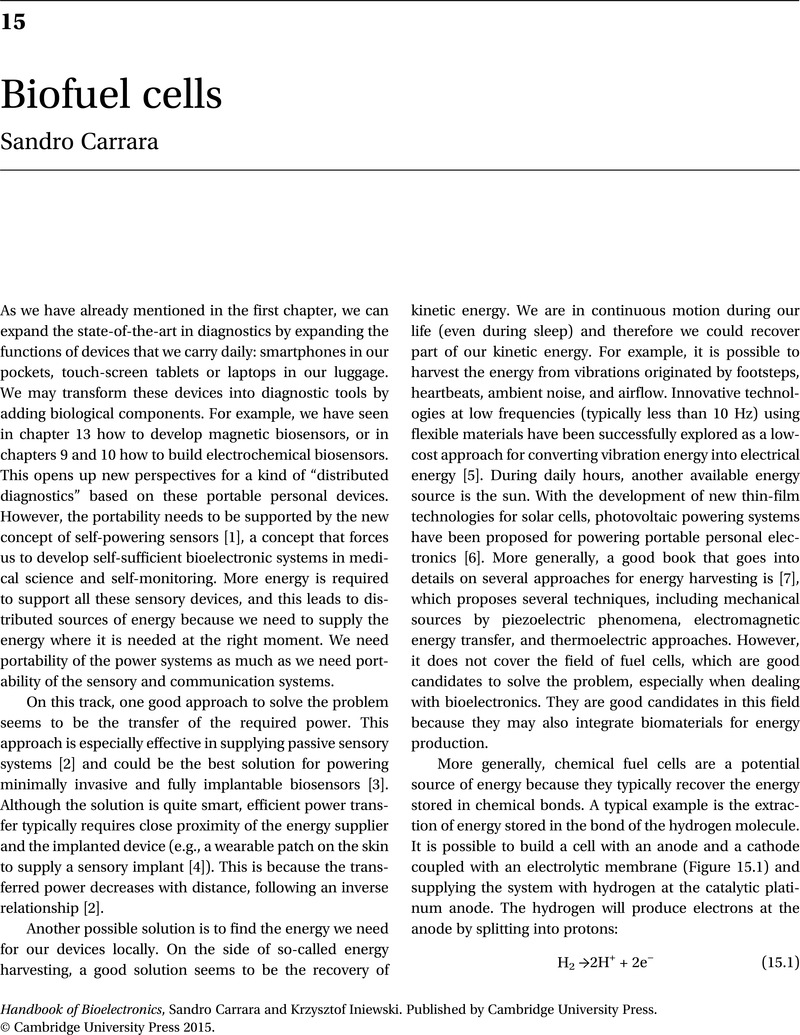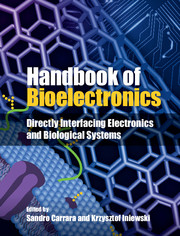Book contents
- Frontmatter
- Contents
- List of Contributors
- 1 What is bioelectronics?
- Part I Electronic components
- Part II Biosensors
- Part III Fuel cells
- 15 Biofuel cells
- 16 Advances and applications in biofuel cells
- 17 Switchable electrodes and biofuel cells logically controlled by chemical and biochemical signals
- Part IV Biomimetic systems
- Part V Bionics
- Part VI Brain interfaces
- Part VII Lab-on-a-chip
- Part VIII Future perspectives
- Index
- References
15 - Biofuel cells
from Part III - Fuel cells
Published online by Cambridge University Press: 05 September 2015
- Frontmatter
- Contents
- List of Contributors
- 1 What is bioelectronics?
- Part I Electronic components
- Part II Biosensors
- Part III Fuel cells
- 15 Biofuel cells
- 16 Advances and applications in biofuel cells
- 17 Switchable electrodes and biofuel cells logically controlled by chemical and biochemical signals
- Part IV Biomimetic systems
- Part V Bionics
- Part VI Brain interfaces
- Part VII Lab-on-a-chip
- Part VIII Future perspectives
- Index
- References
Summary

- Type
- Chapter
- Information
- Handbook of BioelectronicsDirectly Interfacing Electronics and Biological Systems, pp. 197 - 201Publisher: Cambridge University PressPrint publication year: 2015



